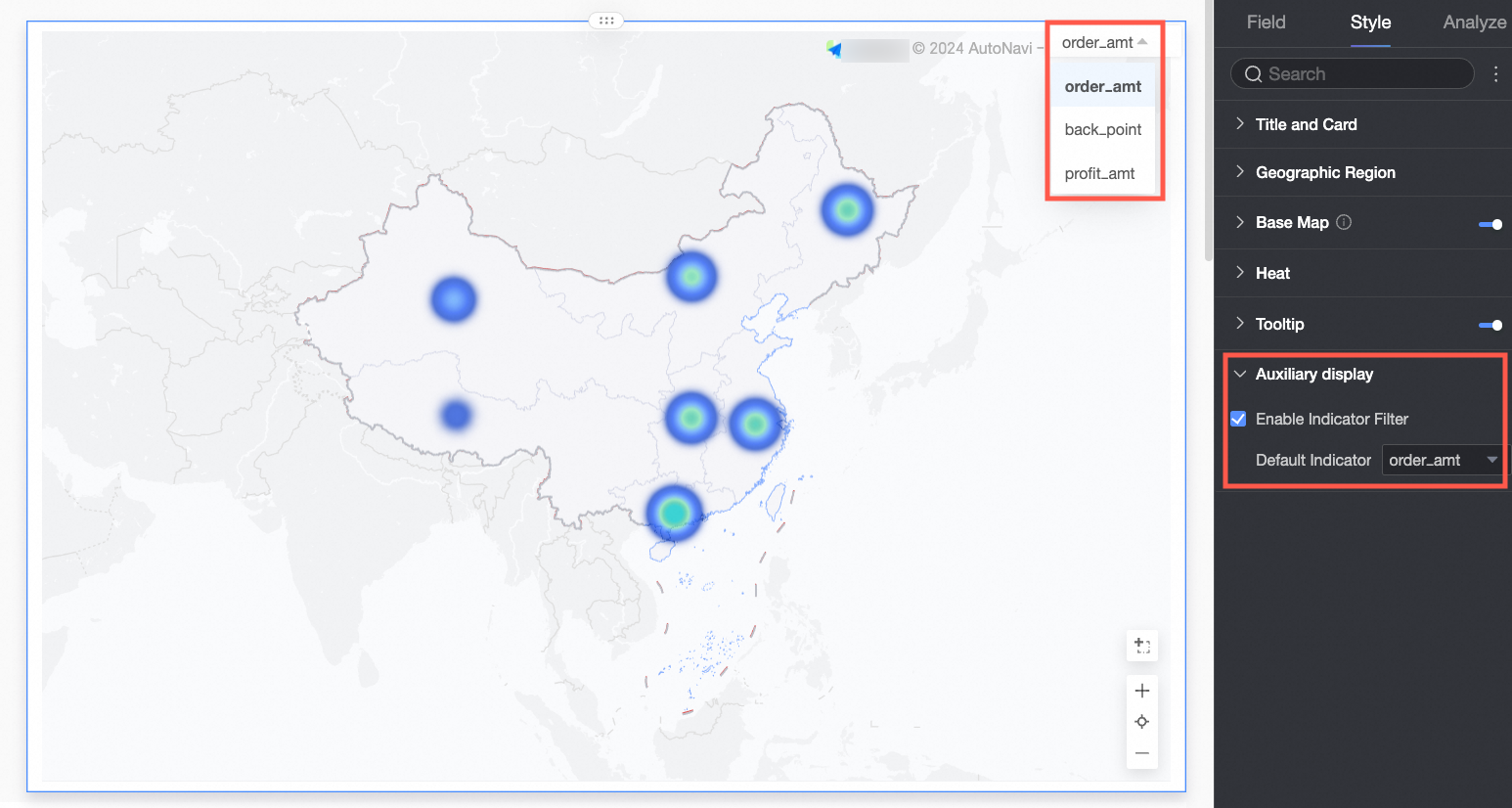Heat maps use color depth to visualize the distribution and density of data. This topic describes how to add data and configure styles for a heat map. You can create heat maps only in the group spaces of the Premium and Professional editions.
Prerequisites
You have created a dashboard. For more information, see Create a dashboard.
Ensure that the geographic area field you want to add has been converted to a geographic information type. For more information, see Configure a field.
NoteFor example, assume the geographic area field for the chart is area. The field is recognized as geographic information only when the
 icon appears. For a detailed region information mapping table, see public-area-info.xlsx. This table is provided for geographic area matching purposes only and does not represent the political stance of Quick BI.
icon appears. For a detailed region information mapping table, see public-area-info.xlsx. This table is provided for geographic area matching purposes only and does not represent the political stance of Quick BI.
Limits
If you create a heat map in Area Name mode, the map consists of Area Name/Dimension and Heat Depth/Measure:
Area Name is a data dimension. You can select a maximum of one dimension, which must be a geographic field, such as a province.
Heat Depth/Measure is a data measure. You must select at least one measure and can select a maximum of five measures, such as order amount and profit amount.
If you create a heat map in Latitude And Longitude mode, the map consists of Latitude And Longitude/Dimension, Location Tag/Dimension, and Heat Depth/Measure:
Latitude And Longitude are data dimensions. You can select a maximum of one longitude field and one latitude field.
Location Tag is an optional data dimension that supports string and geographic dimensions.
Heat Depth/Measure is a data measure. You must select at least one measure and can select a maximum of five measures, such as order amount and profit amount.
Chart overview
Scenarios
Heat maps are often used to display the spatial distribution of data for areas such as administrative regions, prefecture-level cities, streets, or latitude and longitude coordinates.
Advantages
Visualization: Visualizes data using various heat map styles.
Interaction: Allows for interaction, such as zooming by area selection, switching measures, and filtering within the component.
Example
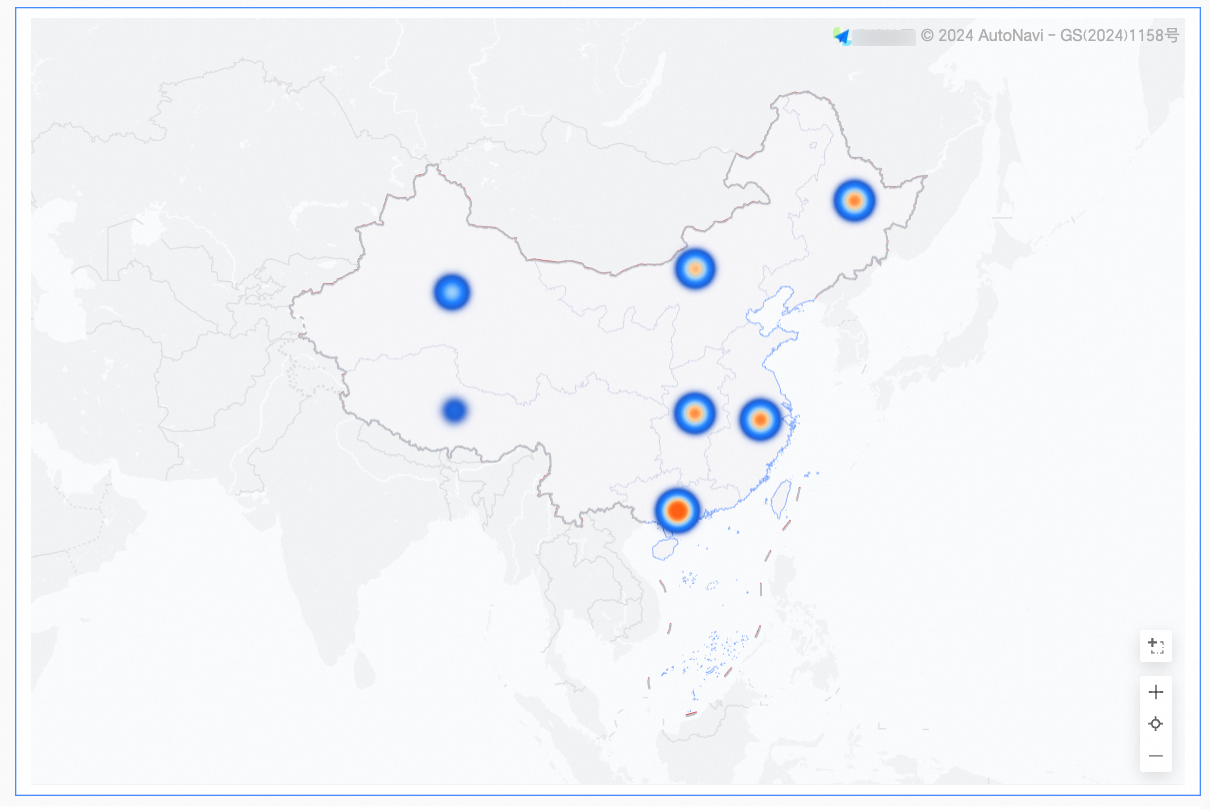
Configure chart fields
On the Fields tab, select the required dimension and measure fields:
For Geographic Information, create a map using either Area Name or Latitude And Longitude.
If you select Area Name, double-click or drag Province to Area Name/Dimension.
If you select Latitude And Longitude, double-click or drag the Longitude and Latitude fields to Latitude And Longitude/Dimension. The Location Tag/Dimension field is optional.
In the Measures list, find Revenue, and then double-click or drag it to the Heat Depth/Measure area.
Click Update. The system automatically updates the chart.
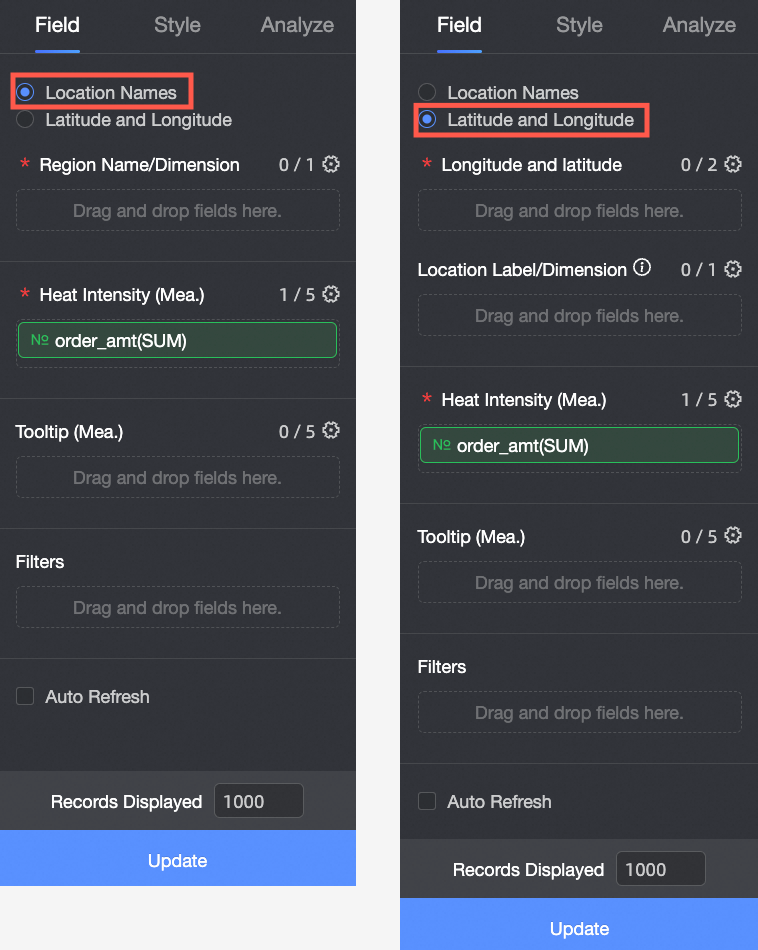
Configure the chart style
This section describes the style settings for the chart. For information about general style settings, see Configure the Chart Title.
In the Map Area section, set Display Range, Outline And Fill, and Base Map Style.
For Display Range, you can select Auto or Custom. In this example, China is selected.
NoteThe Auto option automatically adjusts the display based on the data range. The Custom option lets you set the range manually. In interactive analysis scenarios, the display always adjusts automatically based on the data range.
Custom display supports global continents and countries, along with regions, provinces, and cities in China.

Enable Manual Adjustment. The current Centroid and Scaling values are automatically generated and can be manually modified.

In the Outline And Fill section, configure the colors for Block Background and Outline.
NoteOutlines are not supported for some regions.
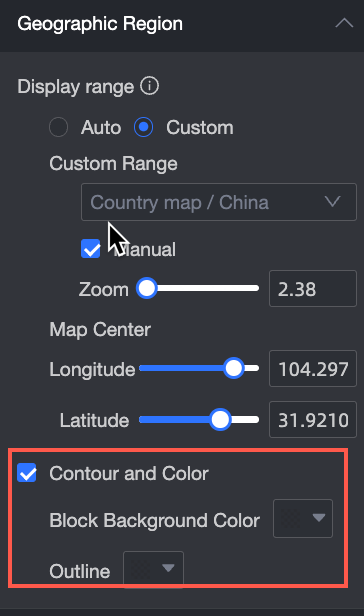
In the Base Map section, you can configure the visibility and style of the base map, and specify whether to display the global base map.
Show Base Map: Click the switch
 to show or hide the base map.
to show or hide the base map.
Base Map Style: You can select from various styles for the Gaode base map.

Show Global Base Map: Select this option to display global information, such as cities, on the base map.
 Note
NoteGlobal base map limits: Each Quick BI organization is limited to 1,000 previews per month for map charts that contain data from outside China. This limit is based on the number of base map initializations. If the limit is exceeded, the map charts display data only for mainland China.
In the Heat section, you can configure the heat map Style, Color Scheme, Transparency, and Heat Radius.
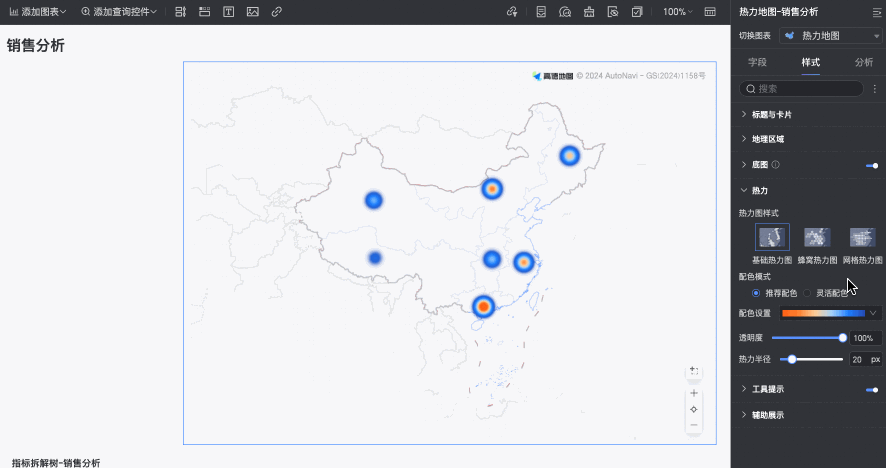
In the Tooltip section, you can configure the tooltip display settings.
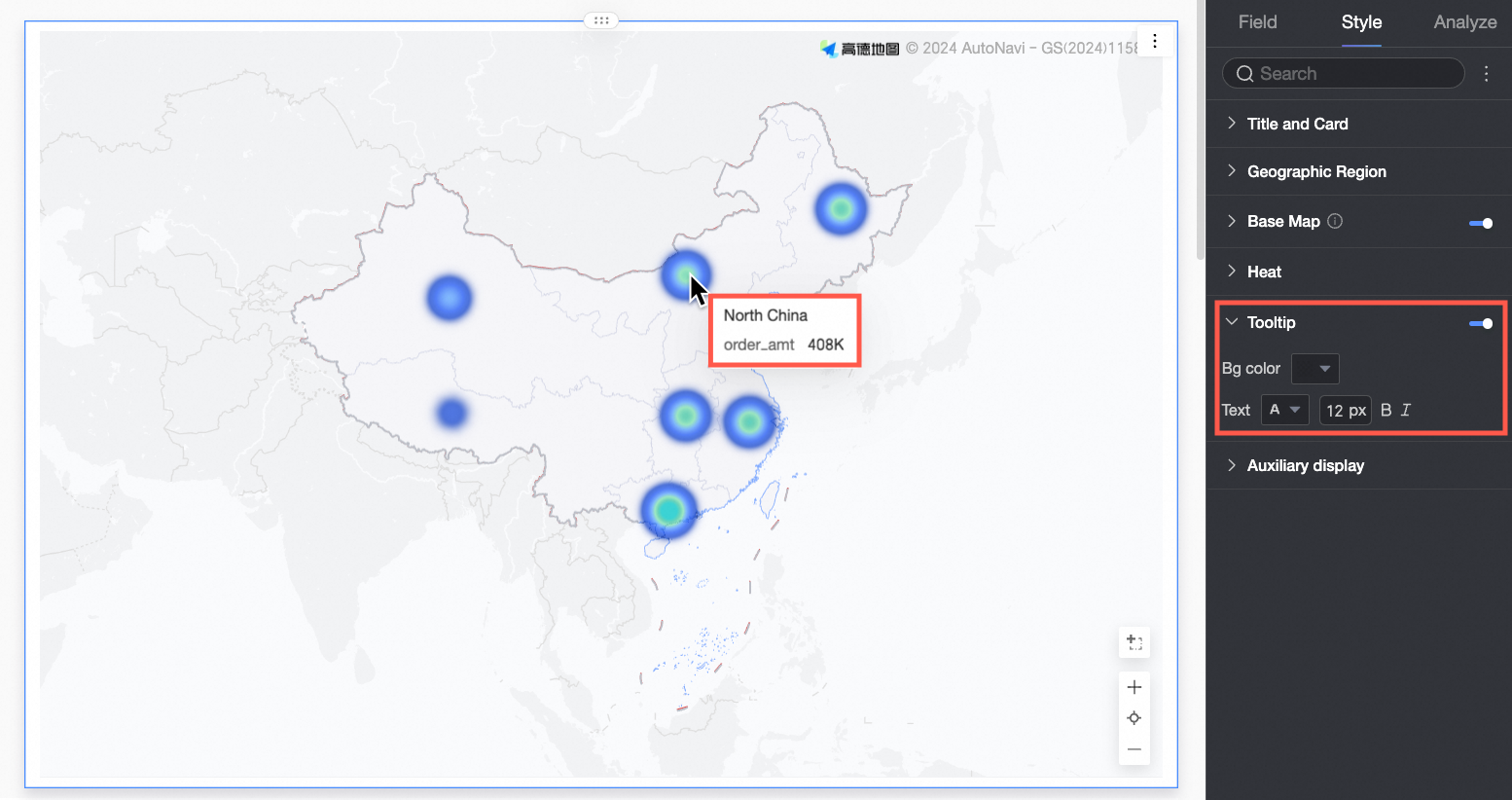
In the Auxiliary Display section, you can enable the metric filter and select which metric items to display.
